I travelled to Lobneykha twice. The first time for a familiarization tour ; Our manager had introduced the place as being near to Thimphu and Paro, on the old Thimphu-Phuentsholing highway. He had said that the place, largely unexplored, was a good spot to send guests to. I had imagined Lobneykha to be flat and tropical, like the settlements you find closer to the southern town of Phuntsholing. But that wasn’t the case, after I had seen it for the second time.
The second time around, I saw Lobneyka in more depth, mostly in its inhabitants.
Stories from Lobneykha
Keyner Dawa Tashi
Thirty-seven year old Dawa Tashi is the keyner of the Goen Sar Kha Monastery. The word “keyner” means someone who takes care of the monastery and its belongings.
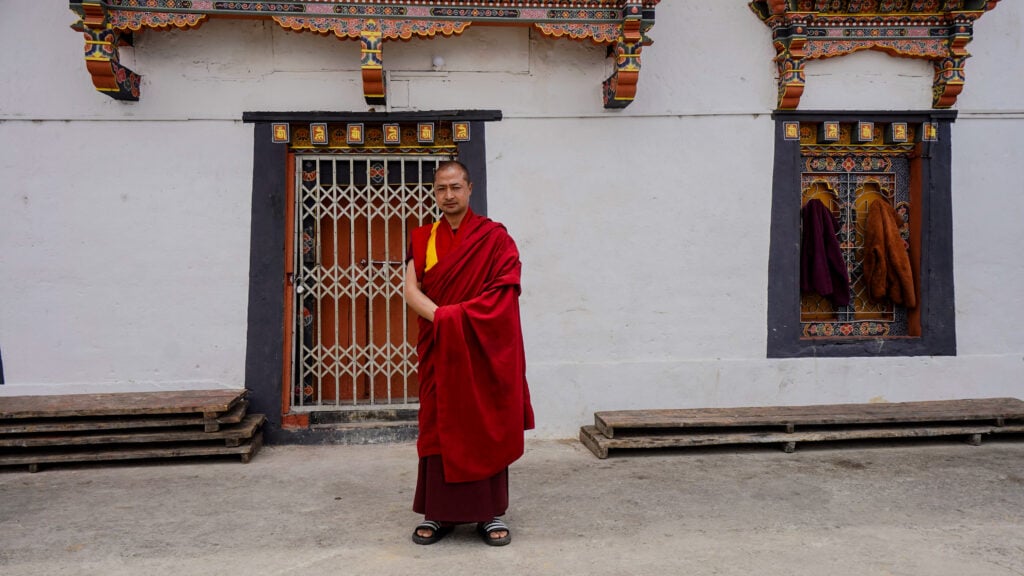
Surprised that he was only thirty-seven, I let him know that usually keyners are much older. Talking to him inside the small cottage, where we would later eat all our meals, keyner Dawa Tashi told me that he had spent nearly thirty years of his life studying. After that, he had returned home– Lobneykha, with a plan. However, that plan was cut short when the villagers – the elders, pleaded with him to become the keyner of the monastery. Previously, the monastery was taken care of not by a monk, but by the villagers- lay people. I later spoke to his dad, Mongo, an ex-monk, who shared that his son was highly capable of such a role.
Gup Gyaltshen and Tshewang Tandin
Gup Gyaltshen, a former Gup (village head) and Tshewang Tandin (L) are cousins. Of all the interviews, this was the most difficult to follow. Their steady enduring looks reminded me of my grandfather.

Gup Gyaltshen spoke in length about Lobneykha and repeatedly said that the location of the village was nice, even though it wasn’t big. When we brought up the issue of young people leaving to urban areas, Gup Gyaltshen said that that wasn’t the case for him. His daughters lived with him and he very proudly shared that there wasn’t a single fallow land in the village, an observation even made by His Majesty the King.
Tshewang Tandin used to be a monk and left in his twenties. He became a monk during the 65th Je Khenpo’s tenure (1965-1968). Recalling all of this, he said that he felt he was no longer young. Currently, both men live pretty comfortable lives. They said that they live their days praying, on pilgrimages, or going for hot spring baths. Tshewang Tandin said that before, when his kids were growing up, they didn’t have enough to eat and wear, but that things had improved now.
Aum Rinchen
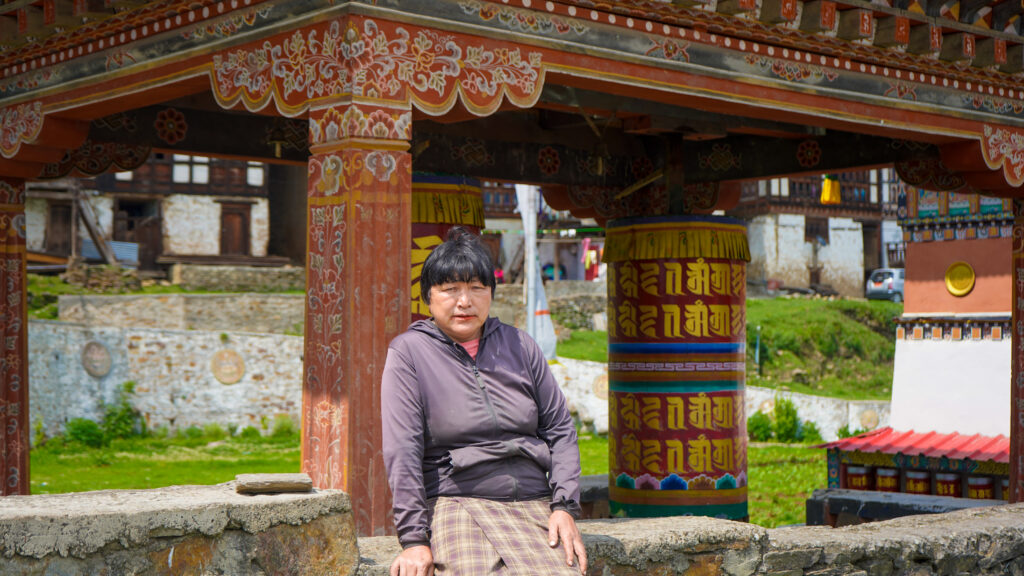
Aum Rinchen’s interview was one of the shortest interviews I conducted. Less than a minute into the interview, I laughed, not knowing what to ask or how to proceed. Aum Rinchen runs the only other shop in the village. She is also a potato farmer, a major cash-crop of the region. She shared that her husband passed away when her kids were young. I then asked her if she had remarried and she said no. However, I later discovered that she and Mongo have been together since 2020.
Mongo
Mongo was our guide to an important chorten (stupa). On the way there, he shared an interesting story. After the Goen Sar Kha monastery was built, efforts were made to transfer the main statue from the chorten to the monastery; it took eight people with great difficulty to transport the statue, but every morning, the statue’s face stayed turning towards its old location. The statue was eventually returned to its former location, this time taking only two people to do so. People come to the chorten to seek blessings for fertility purposes.
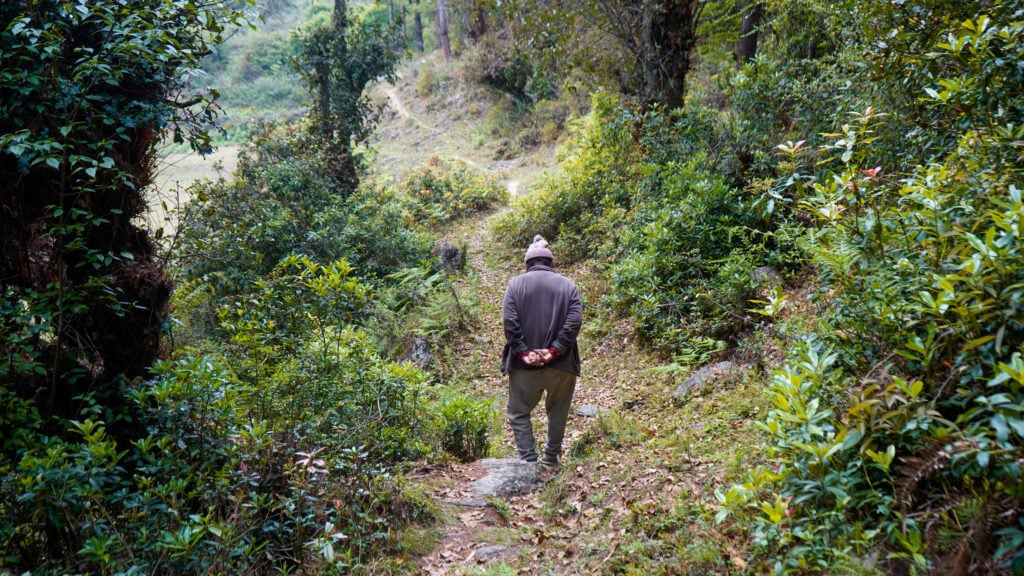
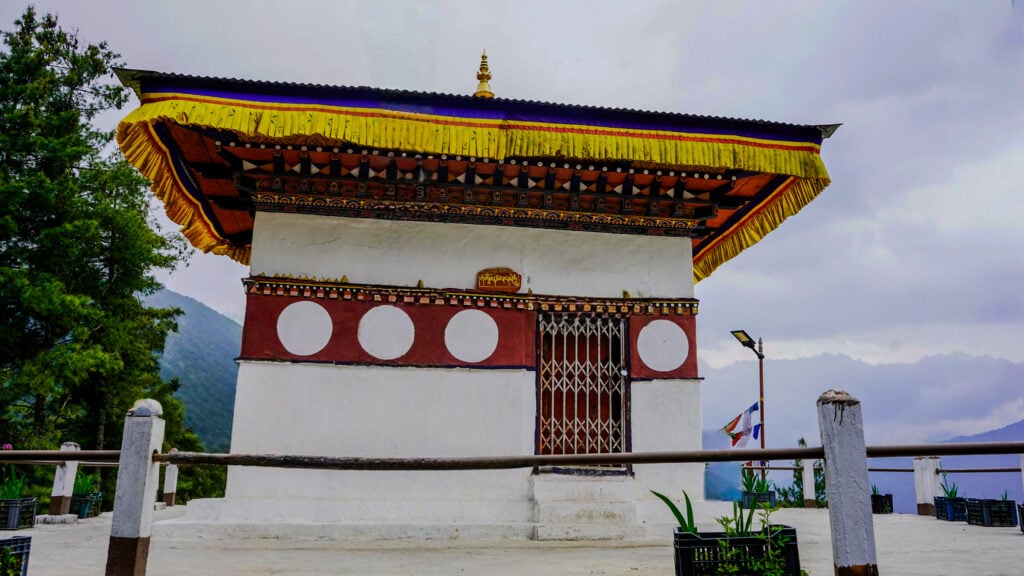
Kencho Sithup
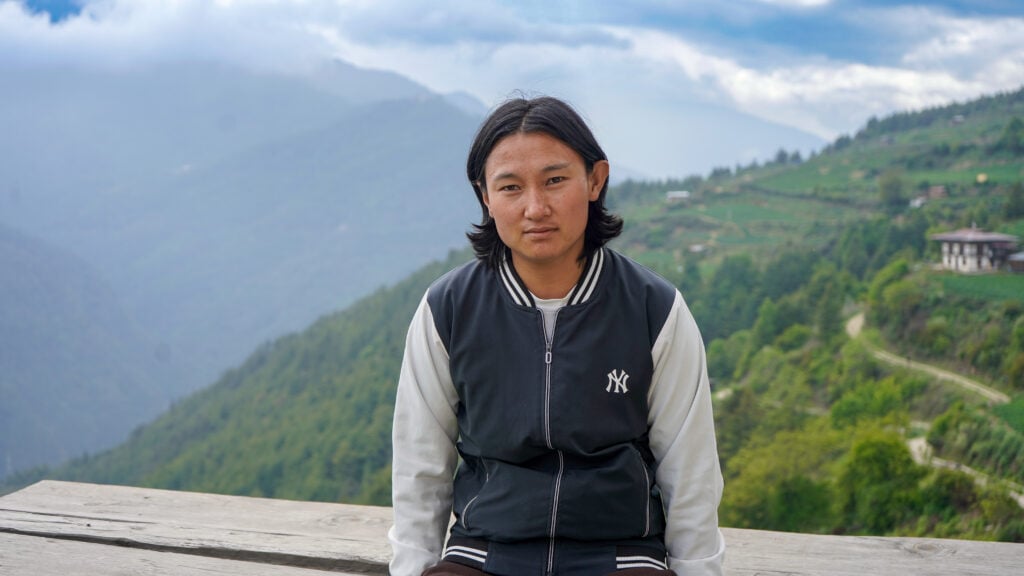
I met Kencho Sithup near Gup Gyaltshen’s house. She walked in with a young girl, her daughter, who I mistook for a sibling. Since we required some more people to interview, I asked her if we could speak to her and she agreed. We spoke sitting on the bench near another stupa, overlooking the valley towards the highway. Kencho Sithup shared that for the past seven years, she had been living in the village, working in the fields and taking care of her home. Her daughter, the same age, attends Lobneykha Primary School.
Sonam Wangchuk
Hailing from Pemagatshel (eastern Bhutan) Sonam Wangchuk is a twenty-seven year old teacher at Lobneykha Primary School.
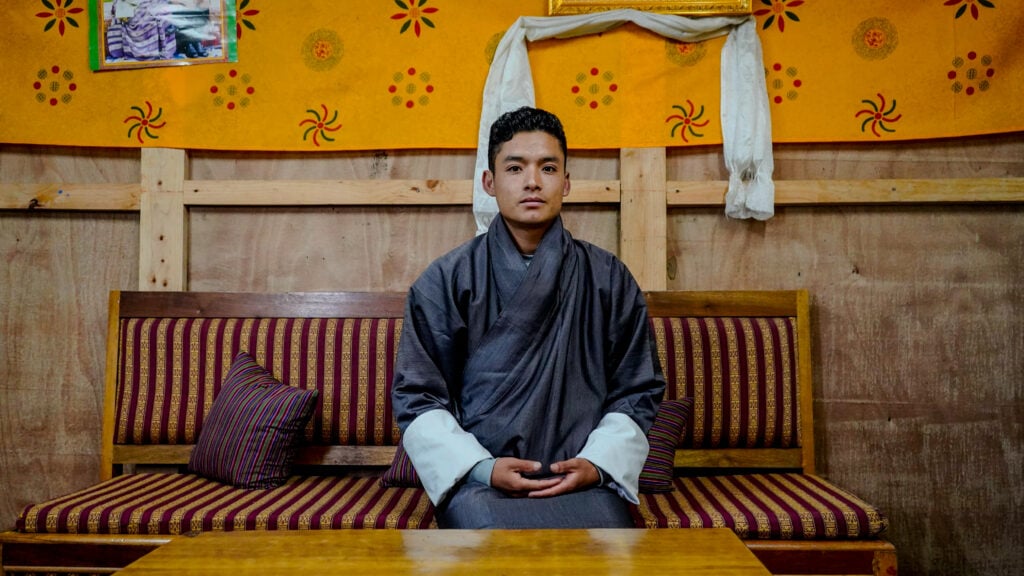
He teaches Dzongkha and Social Studies, with Dzongkha as his speciality. When I asked him which subject he enjoyed teaching more, he said that Dzongkha was the obvious choice. He added that he enjoyed teaching all subjects, working with the young kids at the school. Lobneykha Primary School was established in 1991 and currently has 17 students, 3 teachers, and 2 non-teaching staff.
Book your trip to Bhutan today! Contact us at [email protected] or call +975 1711-2338 any time, anywhere!


